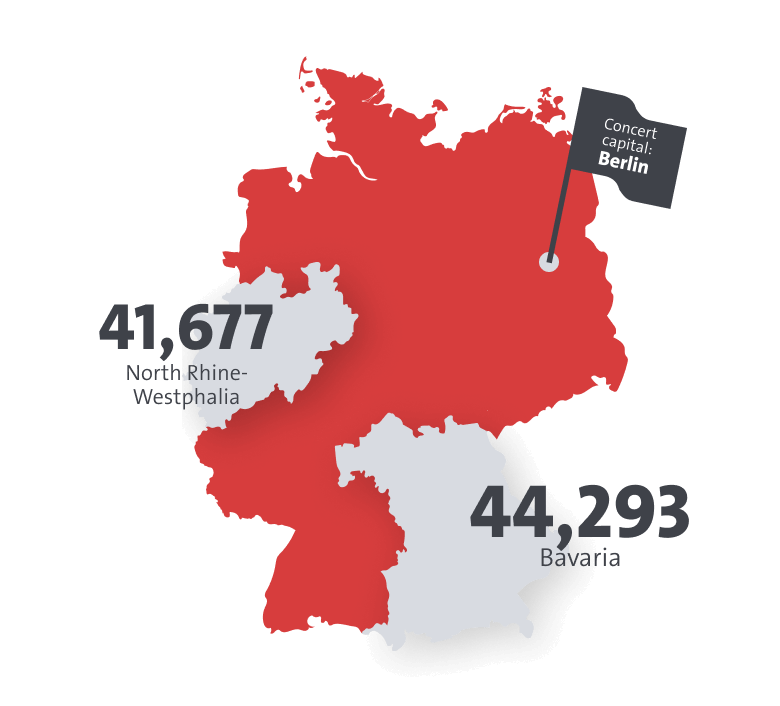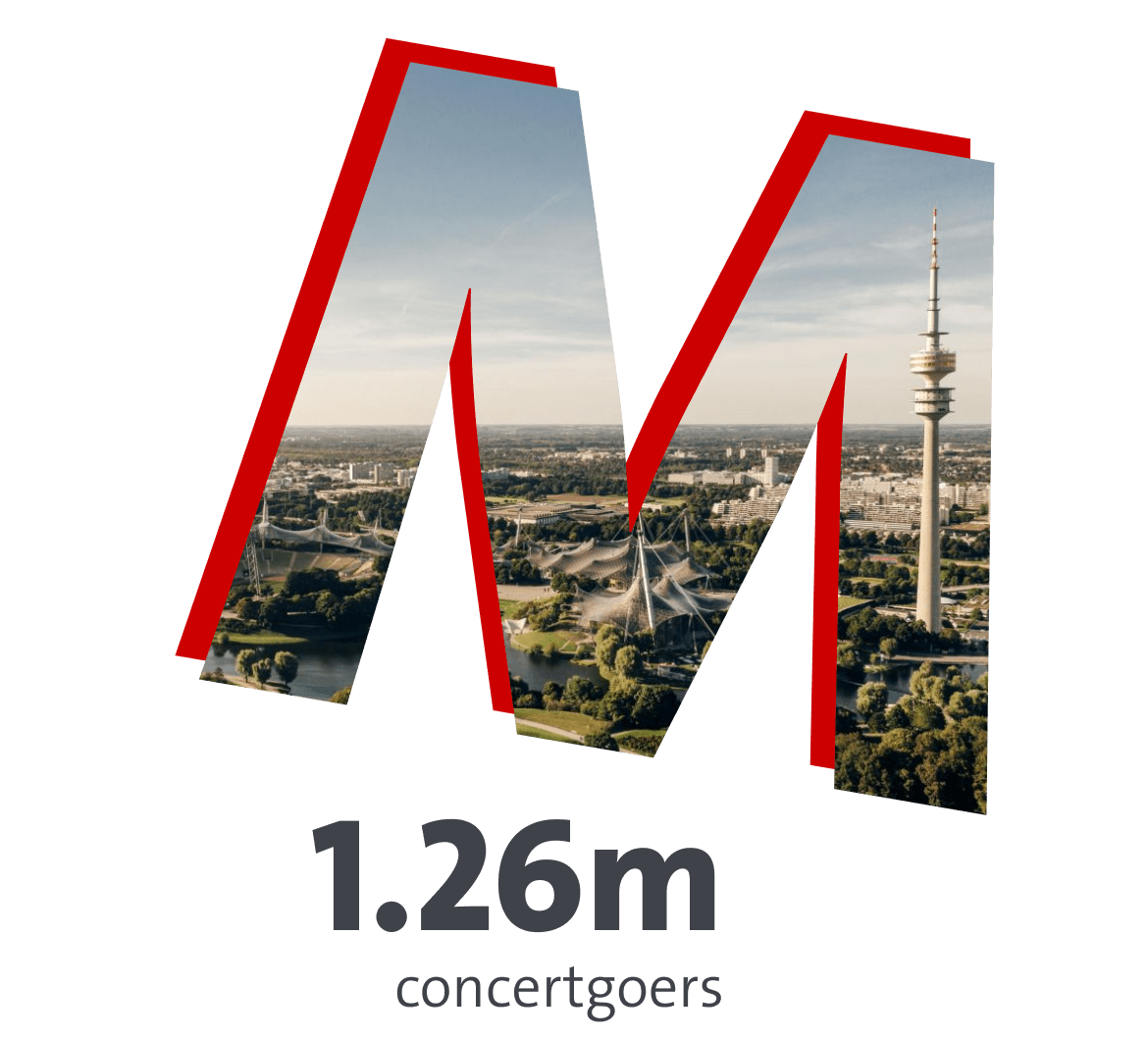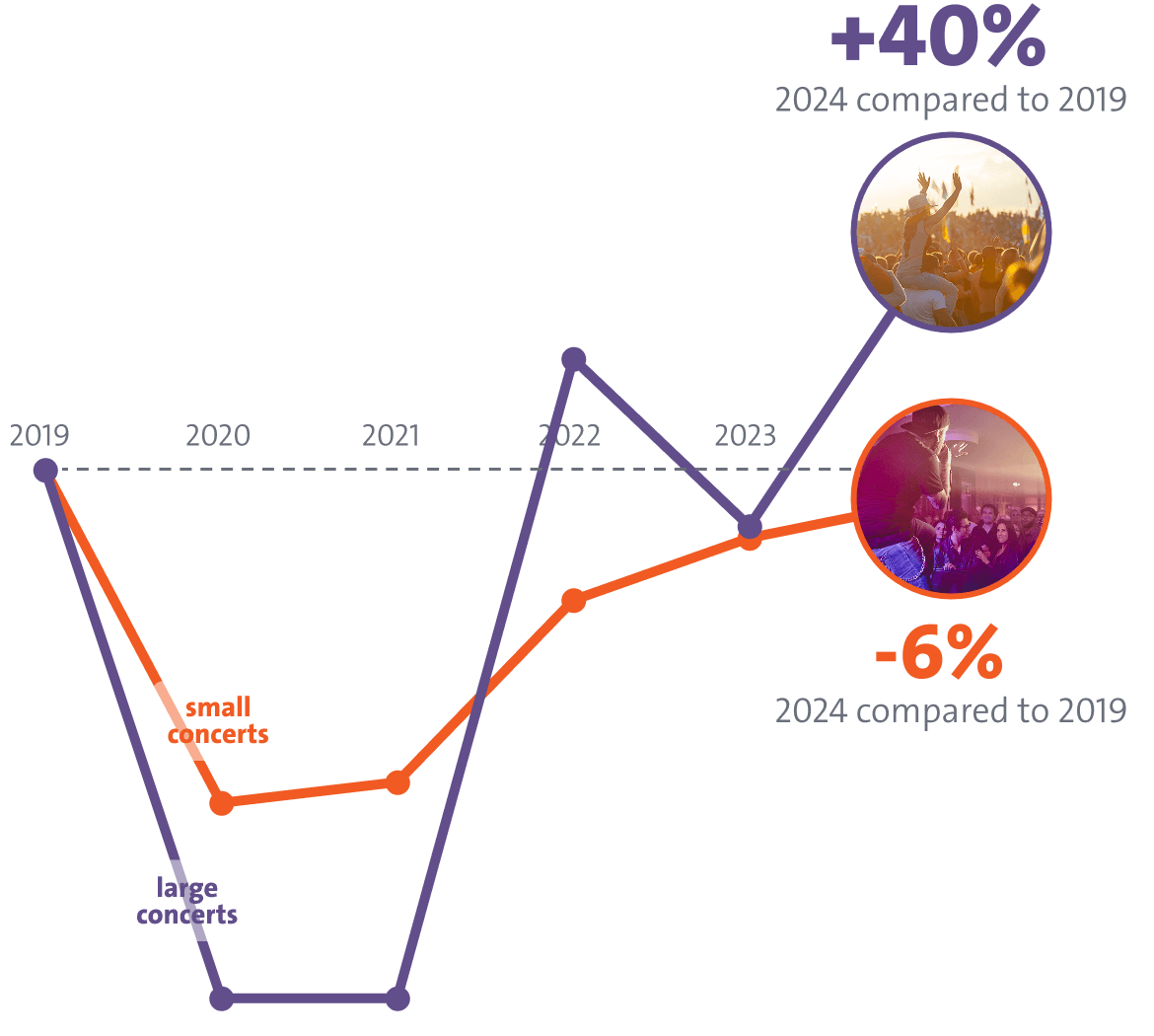Concerts in Germany: facts & figures
In which month do the most concerts take place in Germany? How do small concerts and major events develop over the course of the year? Which venues attract the most music fans? We provide exclusive insights into the data for the 2024 concert year.
Record attendance at concerts in 2024
2024 was a good year for live music: more concerts than in the previous year, attended by numerous music fans. We recorded 70 million concertgoers last year. In other words, almost every person in Germany - from infants to the elderly - attended a concert in 2024. That's even more than in 2019. The number of concerts is still just below pre-coronavirus levels, but is on the right track.
The following analyses show which regions are hosting the most concerts, which venues are attracting the biggest crowds and who is benefiting most from the boom.

Where the most concerts take place
Among the federal states, Bavaria and North Rhine-Westphalia are in the lead. Less densely populated Bavaria is even slightly ahead of the most populous federal state in western Germany.
Unsurprisingly, Berlin leads the way in terms of cities - both in terms of the number of concerts and the number of concertgoers. It is followed by Hamburg, Munich and Cologne.

Munich's Olympic Park attracts the crowds
The number one venue from the previous year also impresses in 2024 with over 1.2 million concertgoers. This comes as no surprise: in 2024, mega stars such as Taylor Swift and Coldplay played at the Olympic Park Munich, attracting music fans from all over Europe to the Bavarian capital. But Munich can do more than just the Olympic Park: two other Munich venues, Messe München and the Zenith, are in the top ten. Messe München benefited from the ten Adele concerts in the specially constructed pop-up arena, which were attended by over half a million people.
The top ten includes well-known venues from Cologne, Hamburg and Berlin, for example, as well as a surprise guest from Oberhausen in 8th place.
When most concerts take place
Summer, sun, festivals: Germans go to the most concerts between June and August. This is shown by our analysis of the seasonality of concerts. However, most events do not take place in summer, but later: October, November and December are the months with the most concerts in Germany.
The months of January and February occupy the lowest places - both in terms of the number of concerts and the number of concertgoers.
Small concerts dominate the music map
At the beginning, we talked about a good concert year, record attendance figures and a recovery from the coronavirus period. We want to further differentiate this picture below. To do this, we have clustered the concerts according to attendance figures. A differentiated look at the 2024 concert year shows that Small concerts are the backbone of the German music landscape. Almost 230,000 of the total of 250,000 concerts will take place in front of a maximum of 500 concertgoers. That is so many more than in all other clusters that the graph for large concerts shows almost no difference. And because the small concerts play such a central role, the next chart takes a closer look at this cluster.

Large concerts in particular are booming
If you look at the concerts of different sizes separately, a differentiated picture emerges.
The good news is that all clusters have grown compared to the previous year - with a small outlier in terms of concertgoer numbers.The trend is therefore heading in the right direction.
However, a comparison with 2019, the last year before the pandemic, shows clear differences between the clusters. The large concerts (over 5,000 people) recorded a real boom of over 50% compared to the previous year. The record total number of concertgoers is probably mainly due to this. The situation is different for smaller concerts: Concerts with a maximum of 500 spectators (remember: they make up 90% of German concerts) are still below pre-corona levels.
Conclusion
A general statement that the German concert industry has recovered from coronavirus would be too short-sighted.Small concerts in particular are not yet at the same level as in 2019, whereas we have seen strong growth in large concerts in recent years.Across the entire concert industry, however, it can be stated that the trend is pointing in the right direction.
Explanation of all figures: The analyses on this page relate to the U-K tariff. These are therefore mainly concerts of pop music and related genres. Concerts with so called 'serious music' (E-Musik) are not included, nor are events with live music where the musical performance is not the main focus.The evaluation is based on the data as of 24 April 2025. The figures may change slightly due to late registrations and corrections.